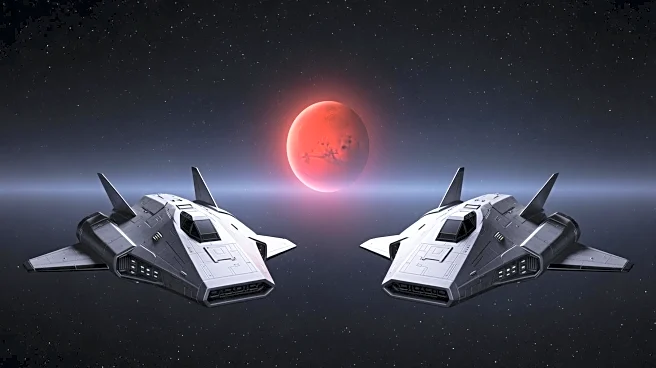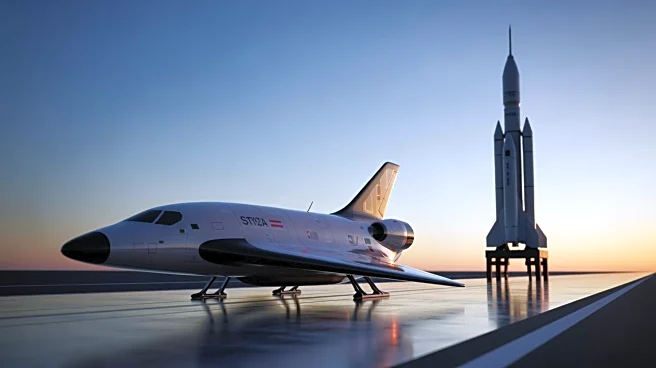What's Happening?
Blue Origin's New Glenn rocket successfully launched NASA's ESCAPADE mission to Mars, marking the rocket's second flight and its first NASA mission. ESCAPADE, part of NASA's SIMPLEx program, aims to study
the interactions between the solar wind and the Martian atmosphere. The mission involves twin spacecraft, Blue and Gold, developed by Rocket Lab and led by UC Berkeley's Space Sciences Laboratory. The mission was completed under budget, costing about a tenth of traditional Mars missions. ESCAPADE's success is crucial as it represents a new approach to planetary exploration, focusing on cost-effective and innovative methods.
Why It's Important?
ESCAPADE's launch signifies a shift in NASA's approach to planetary exploration, emphasizing cost-effective missions that leverage commercial partnerships. This mission could pave the way for future collaborations between traditional science institutions and the commercial space industry, potentially leading to more frequent and diverse space missions. The data collected by ESCAPADE will enhance understanding of Mars' atmospheric evolution, which is vital for future exploration and potential colonization efforts. The success of this mission could influence NASA's funding strategies and mission planning, encouraging more innovative and risk-taking approaches.
What's Next?
Following the launch, the UC Berkeley team will work with Rocket Lab to commission the spacecraft over the next 45 days. The mission will then transition to Mars, where the twin spacecraft will begin collecting data. The collaboration between UC Berkeley and Rocket Lab will continue throughout the mission, ensuring its success and addressing any challenges that arise. The findings from ESCAPADE could inform future Mars missions and contribute to the broader understanding of planetary atmospheres and solar interactions.











